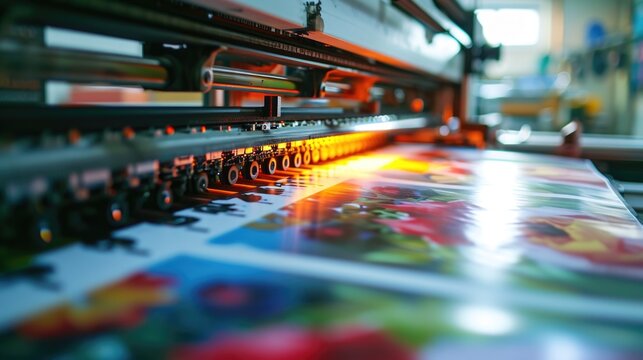
Introduction to Motion Stickers
In today’s digital age, motion stickers have become a tremendous addition to both personal and professional branding. Their ability to captivate and engage viewers through dynamic imagery makes them increasingly popular. This guide will explore how to print motion stickers, a process that combines creativity with technology to produce impressive results.
Whether you’re an entrepreneur, a graphic designer, or a curious hobbyist, understanding the ins and outs of printing motion stickers can be tremendously beneficial. Let’s uncover the secrets to creating these delightful visual assets using the latest technology.
Understanding the Basics of Motion Stickers
What Are Motion Stickers?
Motion stickers are animated elements that go beyond traditional static stickers. Utilizing advances in technology, they can bring life to promotional materials, digital content, and even physical products. From eye-catching advertisements to engaging social media posts, their application is vast and versatile.
Why Print Motion Stickers?
Printing motion stickers offers a unique way to differentiate your brand in a crowded market. They provide an intriguing method to convey messages and showcase creativity. Here’s why you might want to delve into the world of printed motion stickers:
- Visual Appeal: Engage audiences with stunning visuals.
- Innovation: Stand out with cutting-edge technology.
- Versatility: Applicable across various platforms and industries.
Essential Tools and Materials
Gathering the Right Materials
Before diving into the printing process, it’s essential to gather the required tools and materials. Here’s a list of what you’ll need:
- Software: Design software like Adobe After Effects or other graphic editing tools.
- Printer: A quality printer capable of handling high-resolution outputs.
- Sticker Paper: Specialized paper designed for stickers.
- Design Elements: Unique graphics and animations for your motion sticker.
Choosing the Appropriate Software
Utilizing the right software is pivotal to success. Applications like Adobe After Effects enable you to create dynamic designs, whereas other tools may offer motion templates for beginners.
Designing Motion Stickers
Step-by-Step Design Process
Designing a motion sticker involves creativity and understanding design principles. Here’s a step-by-step process to guide you:
- Concept Development: Define the purpose and theme.
- Sketching Ideas: Create rough designs and layouts.
- Digital Creation: Utilize software to bring sketches to life.
- Animation: Add animations to transform ordinary stickers to motion stickers.
- Review and Edit: Ensure quality by fixing any flaws or errors.
Incorporating Brand Elements
Integrating brand colors, logos, and messaging can transform a standard motion sticker into a powerful marketing tool, creating consistency across all digital and print platforms.
Printing Your Motion Stickers
Choosing the Right Printer
Selecting an appropriate printer is crucial. Consider features like resolution, color accuracy, and compatibility with sticker paper. Printers tailored for graphic designs are often the most effective.
Preparation and Printing Process
Before sending your design to the printer, ensure settings are calibrated properly for optimal results. Here’s how:
- Resolution: Ensure the image resolution is set to at least 300 DPI.
- Paper Settings: Choose the right paper type and quality settings.
- Test Print: Run a prototype print to make any necessary adjustments.
Finishing Touches and Quality Control
Quality Assurance Checks
Before finalizing the prints, perform quality control checks to ensure color consistency, precision, and movement effect alignment. Any discrepancies should be addressed promptly.
Application and Use
Now that you’ve printed your motion stickers, it’s time to apply them across your desired medium, whether on products, promotional materials, or within digital spaces. Their captivating nature will undoubtedly reach and impress your target audience.
Advanced Techniques and Tips
Exploring Advanced Printing Options
For professionals looking to take their motion stickers further, exploring advanced printing techniques can be tremendously rewarding. Options include holographic finishes, enhanced animations, and augmented reality interactions.
Customization for Specific Needs
Tailoring your approach to suit industry-specific requirements can result in more effective marketing. Focus on incorporating elements unique to your field for a personalized touch.
Conclusion: The Future of Motion Stickers
In conclusion, exploring how to print motion stickers opens the door to endless opportunities. With continual advancements in technology, the ways in which motion stickers can be utilized seem boundless. Whether enhancing business marketing materials or creating a distinctive persona in personal projects, the delight in this big leap towards innovation is palpable.
With thoughtful design, strategic planning, and creative execution, printing motion stickers can become a significant asset in your marketing toolbox.
Resources For Further Learning
If you’re eager to learn more, consider exploring the following resources:

Frequently Asked Questions
What software is best for creating motion stickers?
Adobe After Effects is highly recommended for its robust features and versatility in creating engaging animations.
Can I use any printer to print motion stickers?
No, it’s best to use high-quality graphic design printers to ensure the best possible results.
What industries benefit most from motion stickers?
Industries like marketing, advertising, and entertainment can greatly benefit due to the engaging nature of motion stickers.






